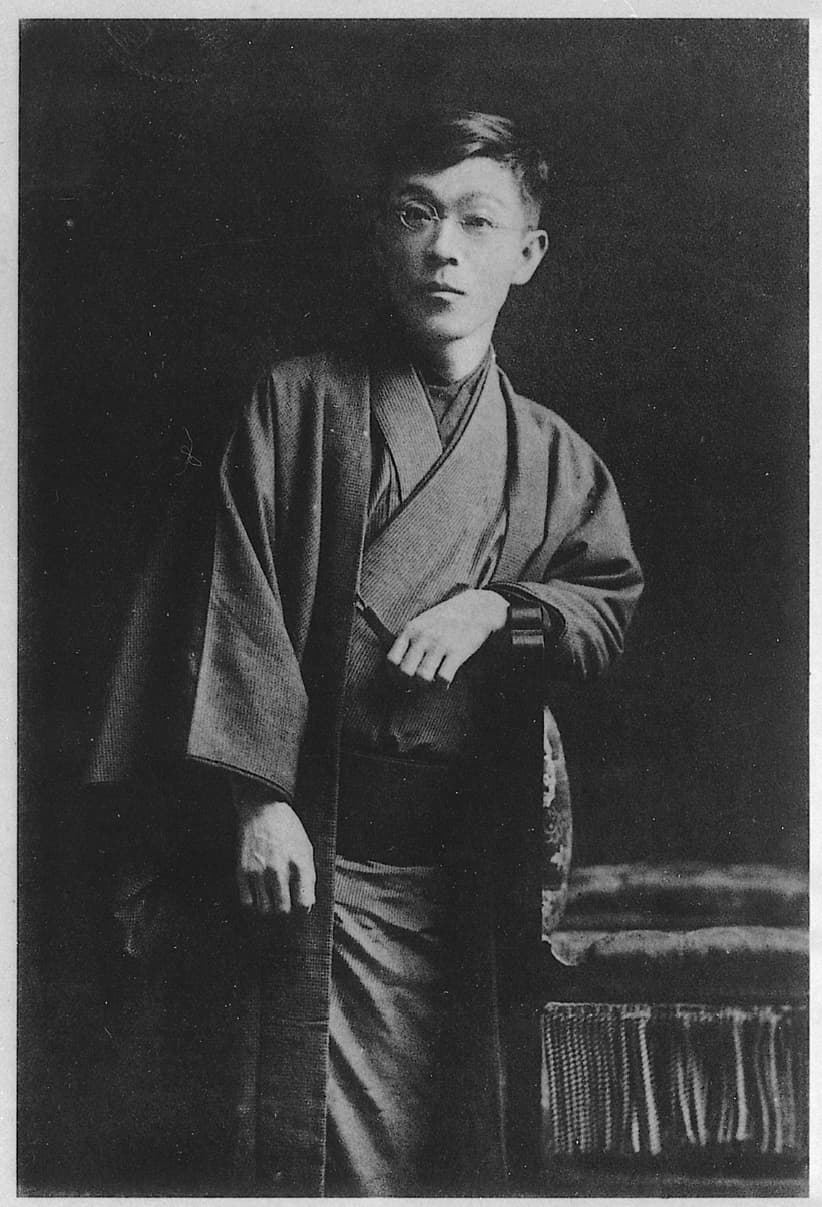
出典:国立国会図書館「近代日本人の肖像」 (https://www.ndl.go.jp/portrait/)
泉 鏡花
明治6年(1873) – 昭和14年(1939)
石川県金沢生まれ。本名、鏡太郎。北陸英和学校中退。明治23(1890)年上京、翌年尾崎紅葉に入門し、明治26(1893)年、京都日出新聞に連載した『冠弥左衛門』で小説家としての第一歩を踏み出す。明治28(1895)年『文芸倶楽部』に『夜行巡査』『外科室』を発表し、観念小説と評価され、作家としての地位を確立する。明治29(1896)年、読売新聞に『照葉狂言』の連載開始。明治33(1900)年『高野聖』を発表、以降『婦系図』『歌行燈』、戯曲『天守物語』などを手がけ、古典的情緒と幻想性を融合させた作品世界で、日本文学史に大きな足跡を残した。
Kyōka Izumi
1873 – 1939
Born in Kanazawa, Ishikawa Prefecture, his real name was Kyōtarō Izumi. He dropped out of Hokuriku Eiwa School. In 1890, he moved to Tokyo and the following year became a disciple of Ozaki Kōyō. In 1893, he took his first step as a novelist with the serialization of “Kanmuri Yazaemon” in the Kyoto Nichi-nichi Shimbun. In 1895, he published “Yakōjunsa” (The Night Watchman) and “Gekashitsu” (The Operating Room) in Bungei Kurabu, which were praised as philosophical novels, establishing his position as a writer. In 1896, he began serializing “Teriha Kyogen” in the Yomiuri Shimbun. In 1900, he published “Kōya Hijiri” (The Holy Man of Mount Kōya), and thereafter produced works such as “Onna Keizu” (The Genealogy of Women), “Uta Andon” (A Song by Lantern Light), and the play “Tenshu Monogatari” (The Castle Tower). Through a unique literary world that fused classical sentimentality and fantasy, he left a significant mark on the history of Japanese literature.

.jpg)